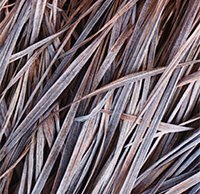Cutting through the noise: What is the best noise reduction software available?
posted Wednesday, March 8, 2017 at 6:00 AM EST

Amateur Photographer looked at five noise reduction software options available on the market today and rated each one. Which one did the best, which did the worst?
For many photographers, the improved high ISO performance of their cameras has been one of the biggest changes in camera technology over the past few years. We push our cameras to higher and higher ISOs, but that doesn’t mean we don’t still want to reduce noise in images. The noise and sharpness balance is subjective, but part of what makes noise reduction software good is the level of control you have over reducing different types of noise while maintaining good detail in the file.
To ensure that we are all on the same page, there are two primary types of noise, chroma noise and luminance noise. Chroma noise, sometimes known as color noise, manifests itself as colored spots throughout your image. Luminance noise is more like film grain, typically quite uniform and at times even desirable in images. Chroma noise is typically the more problematic of the two types of noise as it looks unnatural and distracting.
As mentioned above, Amateur Photographer looked at five noise reduction options: Adobe Camera Raw (ACR), Google Nik Collection Dfine 2, DxO OpticsPro 11 Elite, MacPhun Luminar (which we took a hands-on look at) and Topaz DeNoise. You may notice that there’s no Capture One Pro 10 listed here, Amateur Photographer didn’t test it but I have been working with the software and a review of it is upcoming.
I don’t want to spoil the results: you should head over to Amateur Photographer for the full breakdown of the noise reduction options. It probably comes as no surprise that Adobe Camera Raw (and by extension Adobe Lightroom, as many of the sliders are shared between the two) worked very well. We recently covered a great tutorial from Blake Rudis about noise reduction in Adobe Camera Raw, which you can see below.
Another excellent option proved to be DxO OpticsPro 11 Elite. It offers “unrivalled lens correction and highly regarded noise-reduction capabilities.” It integrates well with Lightroom and offers additional sliders not often found in other software, such as the ability to reduce dead and hot pixels, the latter of which proves highly useful for night sky photography and other high ISO long exposure photography.
Google Nik Collection Dfine 2 proved to be a medium option overall, but it is also free, unlike the rest of the software in the list. Granted, many use Nik software as plug-ins for paid software like Lightroom and Photoshop, but it’s worth noting that the plug-in collection itself is free and you can use the software standalone. It was unable to match the performance of other options in the roundup, but it nonetheless has something positive to offer photographers.
To read much more and learn the ultimate verdict, see Amateur Photographer’s full breakdown.
(Via Amateur Photographer)